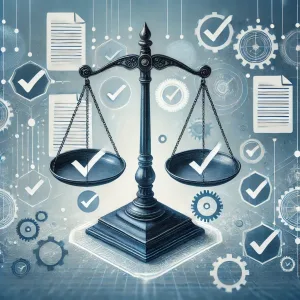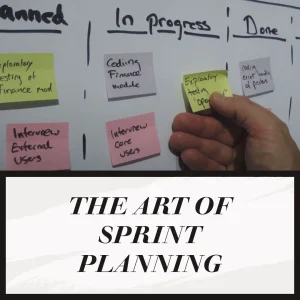To find out how Artificial Intelligence is changing the Project Management landscape, you may enjoy reading this article https://www.shaunstoltz.com/did-artificial-intelligence-just-change-everything-about-project-management/
I. Introduction
Have you ever felt overwhelmed by the complexity of managing a project, especially when deadlines are looming, and the team is constantly changing gears? If so, you’re not alone. But fear not, because Agile project management is here to save the day! In this blog post, we will delve into the 3 C’s of Agile – Card, Conversation, and Confirmation – to help you streamline your project management process and bring your team to new heights of success.
First, let’s briefly touch upon what Agile project management is all about. Born out of the need to adapt and respond quickly to changing requirements, Agile is an iterative and flexible approach to project management that values collaboration, communication, and customer satisfaction above all else. Agile teams work in short, focused sprints, allowing them to continually assess and adjust their priorities based on feedback and results.
Now, effective communication is the backbone of Agile, and that’s where the 3 C’s come in. The 3 C’s – Card, Conversation, and Confirmation – are essential components of Agile that foster clear, concise, and productive communication among team members. By mastering these three elements, you will not only improve the overall efficiency of your project but also create a more transparent and collaborative environment for your team.
So, are you ready to dive into the world of Agile and explore the 3 C’s? Let’s get started!
II. Card
Picture this: you’re in the middle of a hectic sprint, and you’re trying to keep track of a multitude of tasks, bugs, and user stories. The sheer volume of work can be overwhelming, right? Well, worry not! The first of the 3 C’s, the Card, is here to help you organize and prioritize your workload efficiently.
A. Definition and purpose of cards in Agile
Cards in Agile are visual representations of work items that your team needs to complete. They provide an at-a-glance overview of what needs to be done, who’s responsible for it, and the progress made so far. These nifty little cards help you break down the project into manageable chunks, making it easier for everyone to stay on the same page and work towards a common goal.
B. Types of cards (e.g. User Stories, Tasks, Bugs)
In the Agile world, there are several types of cards that you might come across:
- User Stories: These cards describe a specific feature or functionality from the end-user’s perspective. They usually follow the format, “As a [user role], I want to [action] so that [benefit].”
- Tasks: These are the individual steps needed to complete a user story or a specific project requirement.
- Bugs: These cards represent issues or defects in the software that need to be fixed.
C. Tips for creating effective cards
Crafting effective cards is an art form in itself. Here are a few pointers to help you get started:
- Writing clear and concise descriptions: Keep your card descriptions short, simple, and to-the-point. Avoid jargon and use language that everyone on the team can understand.
- Using the INVEST criteria: Make sure your cards are Independent, Negotiable, Valuable, Estimable, Small, and Testable. This ensures that your cards are well-defined and can be easily prioritized.
- Prioritizing and organizing cards on the board: Arrange your cards based on their priority and dependencies, so your team can quickly identify what to work on next.
D. Examples of well-written cards
To give you a better idea, let’s take a look at a few examples of well-written cards:
User Story: “As a shopper, I want to filter products by price range so that I can find items within my budget.” Task: “Implement a price range filter in the product listing page.” Bug: “Price filter doesn’t work when currency is set to Euros.”
By following these guidelines and examples, you’ll be well on your way to mastering the first of the 3 C’s: Card. Remember, a well-crafted card is the first step towards an efficient and successful Agile project.
III. Conversation
They say that communication is the key to any successful relationship, and this holds true for Agile teams as well. The second of the 3 C’s, Conversation, is all about fostering meaningful interactions between team members to ensure that everyone stays informed, aligned, and motivated.
A. The importance of communication in Agile teams
In Agile, communication is the lifeblood that helps teams adapt and respond quickly to changes. Regular conversations allow team members to clarify requirements, share ideas, and address any concerns or roadblocks. By keeping the lines of communication open, you ensure that everyone is on the same page and working towards the same goals.
B. Facilitating productive conversations
Agile teams use a variety of meetings to promote open communication and collaboration:
- Daily stand-up meetings: These quick, daily check-ins give team members a chance to share their progress, discuss any challenges, and plan their work for the day.
- Sprint planning and review meetings: These meetings help the team to set goals and priorities for the upcoming sprint and review the accomplishments of the previous sprint.
- Retrospective meetings: Held at the end of each sprint, retrospectives provide an opportunity for the team to reflect on what went well, what can be improved, and what actions can be taken to enhance the team’s performance.
C. Tips for effective communication in Agile teams
Nurturing a culture of open and honest communication takes effort and practice. Here are some tips to help you build stronger communication within your Agile team:
- Active listening: Encourage team members to listen attentively to others and try to understand their perspectives before responding.
- Asking clarifying questions: Don’t hesitate to ask questions if something is unclear. This helps to prevent misunderstandings and ensures that everyone is on the same page.
- Encouraging open and honest feedback: Create an environment where team members feel comfortable sharing their thoughts and concerns without fear of judgment or repercussions.
D. Addressing common communication challenges
It’s important to recognize and address any communication challenges that may arise within your team. Some common issues include:
- Remote work: Encourage the use of video calls and collaboration tools to bridge the communication gap between remote team members.
- Language barriers: Be patient and understanding when working with team members who speak different languages, and consider using tools like translation software to facilitate communication.
- Time zone differences: Schedule meetings at times that are convenient for all team members, or consider alternating meeting times to accommodate everyone.
By focusing on Conversation, the second of the 3 C’s, you’ll be fostering a culture of open communication that will empower your Agile team to overcome obstacles and achieve project success.
IV. Confirmation
You’ve made it to the third and final C of Agile: Confirmation. While Cards help you organize work and Conversations keep everyone on the same page, Confirmation is all about ensuring that the work being done meets the desired criteria and provides value to the end-users. Let’s dive in and see how Confirmation ties everything together in the Agile process.
A. Definition and purpose of confirmation in Agile
In Agile, Confirmation is the process of verifying that work items have been completed according to their acceptance criteria and that they meet the desired quality standards. Confirmation helps teams ensure that they are delivering value to their customers and that the final product aligns with the intended goals and requirements.
B. The role of acceptance criteria in confirmation
Acceptance criteria are predefined conditions that a work item must meet before it can be considered “done.” These criteria provide a clear and objective way to measure the success of a given work item, enabling the team to confirm that the end result meets the needs of the stakeholders and end-users.
C. Techniques for confirming that work is done
There are several methods that Agile teams can use to confirm the completion and quality of their work:
- Test-driven development: This practice involves writing tests for a feature or functionality before writing the actual code, ensuring that the code meets the predefined acceptance criteria.
- Continuous integration and continuous delivery: By integrating and deploying code changes frequently, teams can identify and address issues early on, ensuring that the final product meets the desired quality standards.
- Peer reviews and pair programming: These collaborative approaches to coding help catch errors and ensure that the code meets the team’s quality expectations and conforms to best practices.
D. Best practices for ensuring confirmation
To make the most of the Confirmation process in your Agile projects, consider the following best practices:
- Define clear and measurable acceptance criteria: Work closely with stakeholders and end-users to establish objective criteria that can be used to assess the success of each work item.
- Implement thorough testing procedures: Adopt a comprehensive testing strategy that includes unit testing, integration testing, and user acceptance testing to ensure that the final product meets the desired quality standards.
- Foster a culture of continuous improvement: Encourage team members to seek feedback and opportunities for improvement throughout the project, using retrospectives and other feedback loops to drive continuous refinement.
By mastering Confirmation, the final C of Agile, you’ll ensure that your team’s hard work results in a high-quality product that delights your customers and stakeholders. With the 3 C’s under your belt—Card, Conversation, and Confirmation—you’re well on your way to Agile project management success!
V. Practical tips for implementing the 3 C’s in your projects
Congratulations on making it this far! Now that you’re familiar with the 3 C’s of Agile—Card, Conversation, and Confirmation—you might be wondering how to put this knowledge into practice. Here are some practical tips to help you implement the 3 C’s in your projects and create a more efficient, collaborative, and successful Agile team.
A. Establishing a culture of continuous improvement
In Agile, the learning never stops. Encourage your team to continuously evaluate their processes, identify areas of improvement, and implement changes to enhance their performance. By embracing a growth mindset and fostering an environment where team members feel empowered to suggest improvements, you’ll create a culture of continuous improvement that drives project success.
B. Encouraging collaboration and transparency
The 3 C’s thrive in an environment where collaboration and transparency are valued. Ensure that your team members have the tools and opportunities to work together, share information, and provide honest feedback. By fostering a sense of trust and openness, you’ll empower your team to tackle challenges head-on and achieve their goals.
C. Providing the right tools and resources
Equip your team with the tools and resources they need to effectively implement the 3 C’s. This might include task management software, communication platforms, and collaboration tools that facilitate efficient planning, tracking, and communication. Additionally, invest in training and professional development opportunities to help your team members stay up-to-date with Agile best practices.
D. Regularly reviewing and adjusting processes
As your team progresses through the project, it’s essential to regularly review and adjust your processes to ensure they continue to support the 3 C’s. This can be done through retrospectives, project reviews, and stakeholder feedback sessions. By being responsive to changing needs and adapting your processes accordingly, you’ll create a more resilient and agile team.
In conclusion, implementing the 3 C’s of Agile—Card, Conversation, and Confirmation—can significantly enhance the efficiency, communication, and overall success of your projects. By following these practical tips, you’ll create an environment that supports the 3 C’s and empowers your team to achieve their full potential. So go ahead, embrace the 3 C’s, and watch your Agile projects soar to new heights!
VI. Conclusion
And just like that, we’ve reached the end of our journey through the 3 C’s of Agile: Card, Conversation, and Confirmation. We hope that this blog post has not only helped you understand these essential components of Agile project management but also inspired you to put them into practice in your own projects.
To recap, the 3 C’s serve as a foundation for effective communication and collaboration in Agile teams. Cards help you organize and prioritize work, Conversations foster open communication and alignment among team members, and Confirmation ensures that your team’s efforts result in high-quality, valuable deliverables.
By incorporating the 3 C’s into your Agile projects, you can expect to see a range of benefits, including improved team collaboration, increased efficiency, and greater customer satisfaction. Moreover, by fostering a culture of continuous improvement and adapting to changes along the way, you’ll be better equipped to tackle the challenges that come with managing complex projects in today’s fast-paced world.
As you embark on your Agile journey, remember that the key to success lies in embracing the 3 C’s and adapting them to your team’s unique needs and circumstances. There’s no one-size-fits-all approach, but with the right mindset, tools, and practices, you can transform your projects and set your team on the path to success.
So, go ahead and give the 3 C’s a try. With Card, Conversation, and Confirmation in your Agile toolbox, you’ll be well-equipped to navigate the ever-changing landscape of project management and achieve outstanding results. Good luck, and happy Agiling!
Find out more about Shaun Stoltz https://www.shaunstoltz.com/about/
This post was written by an AI and reviewed/edited by a human.



